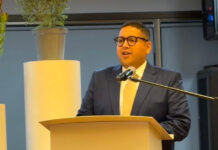Heritage Day is an open South African occasion celebrated on 24 September. On this day, South Africans all over the country are urged to commend their way of life and the decent variety of their beliefs, customs, traditions and rituals, in the more extensive setting of a country that has a place with every one of its kin.
Heritage:
Heritage is best broken up into two types: natural and cultural.
Natural:
A country’s natural heritage is its environment and natural resources, like gold and water. Areas that are very special and where animals or plants are in danger of extinction like the St. Lucia Wetlands and uKhahlamba Drakensberg Parks in KwaZulu Natal are often designated World Heritage sites. They are respected and internationally protected against harm.
Cultural:
Cultural heritage, on the other hand, can be an altogether more contentious issue. Normally, the term ‘cultural heritage’ is used to describe those things that contribute to the sense of identity of a particular population or community of people. These can be special monuments, like a building, sculpture, painting, a cave dwelling or anything important because of its history, artistic or scientific value.
South African Culture
South Africa has been legendarily referred to as the rainbow nation because it is made up of so many diverse cultures and religions. To name but a few in South Africa, we have; Zulu, Xhosa, Pedi, Tswana, Ndebele, Khoisan, Hindu, Muslim, and Afrikaner people.. All of these people are united by calling South Africa home
South Africa has eight places declared as World Heritage Sites, these are:
- The iSimangaliso Greater St. Lucia Wetland Park
- The uKhahlamba Drakensberg Park
- Robben Island
- The Fossil Hominid Sites of Sterkfontein, Swartkrans, Kromdraai and environs
- The Mapungubwe Cultural Landscape
- Vredefort Dome
- The Cape Floral Region
- The Richtersveld Cultural and Botanical Landscape















